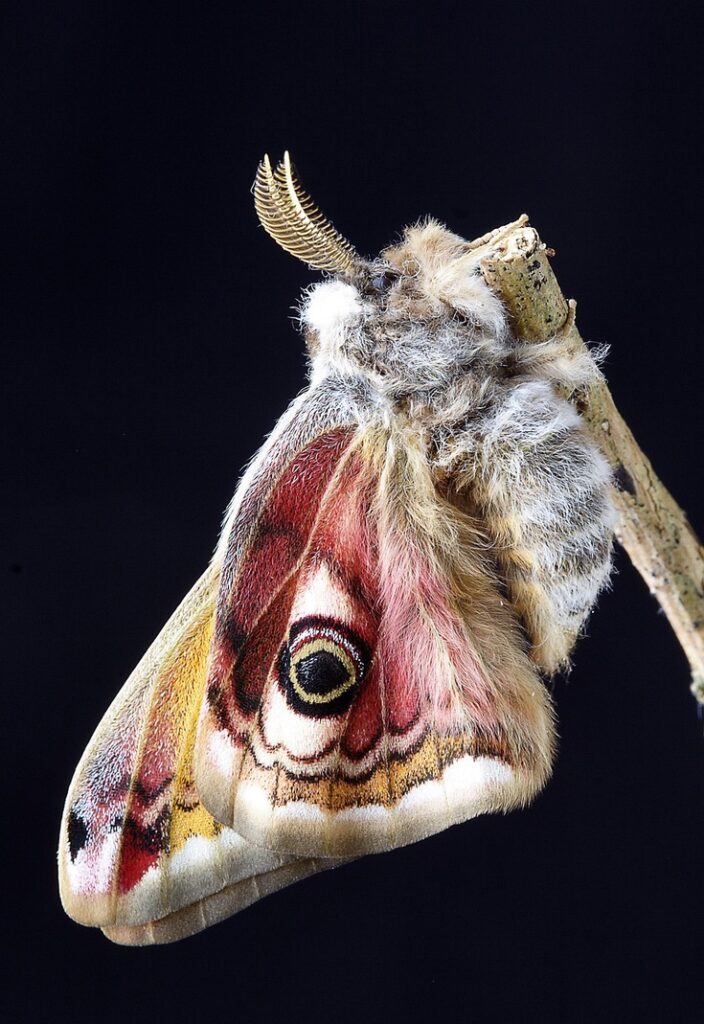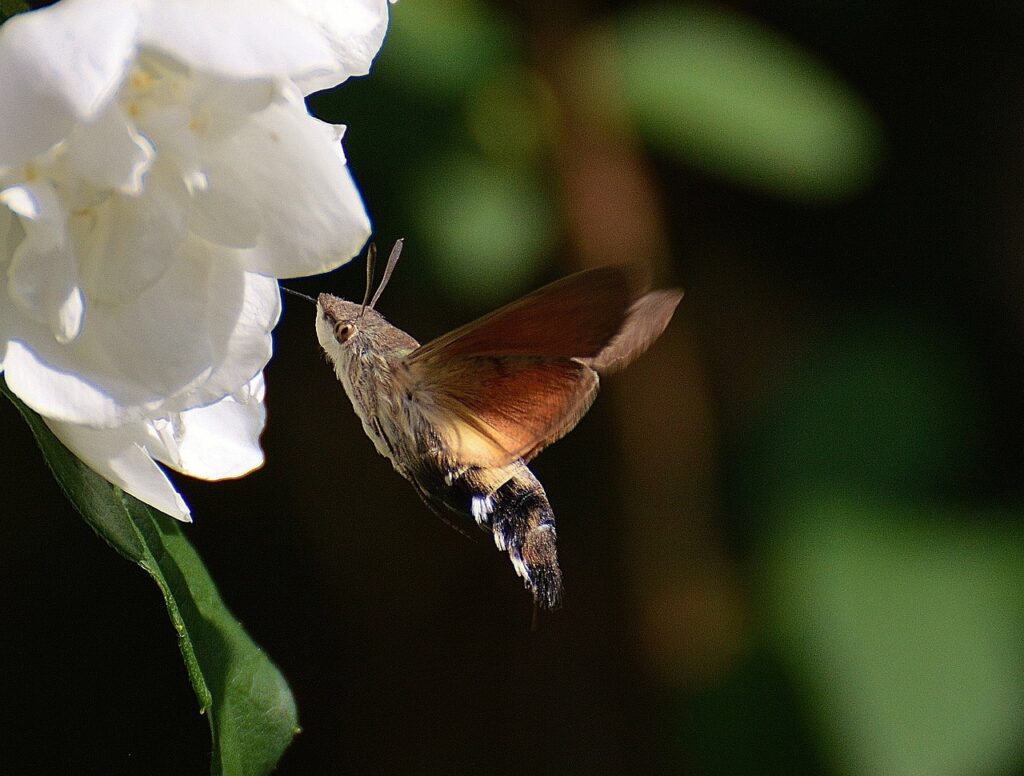Moths vs Butterflies

Our largest moth in the US, the cecropia moth with a wingspan up to 7 inches long
I never thought of moths as pollinators until recently. Their cousins, the butterfly, get a lot more attention. But moths are vital parts of nature and come in so many varieties. And they are fascinating so let’s learn more!
First, what is a moth? An insect, of course, which is a group of animals with six legs and antennae. An interesting side note, spiders are not insects because they have eight legs. Hmm.
How do moths compare vs butterflies?

Evening primrose being pollinated by a moth. How beautiful!
And how do they compare to butterflies? Both are important pollinators with moths generally flying at night and butterflies flying during the day. Just like bees and butterflies, moths visit flowers to feed on nectar.
As they move from flower to flower, they transfer pollen, helping plants reproduce and produce seeds. And if you want to learn more about pollinators, read our resource “Amazing Pollinators in the Garden”.
So what flowers get pollinated at night? A favorite native plant, evening primrose, is pollinated by moths as the flowers bloom mostly after dark.
What’s the easiest way to tell moths from butterflies?

The easiest way to tell a moth is the fuzzy antennae on top of their head
Butterflies and moths start out as eggs which turn into caterpillars and then finally into moths or butterflies. Both the winged insect and the caterpillar are food to lots of other animals including birds, bats, lizards, frogs and all sorts of creatures. To learn more about caterpillars turning into gorgeous butterflies, read our blog “Butterflies”.
So how do you tell them apart? The easiest way is to look at the antennae, which are feathery on a moth but are thin and wire-like on a butterfly.
Some moths have no mouths!
And moths have some cool unique characteristics. To survive in the wild, moths have evolved some remarkable camouflage abilities, making them less vulnerable to predators. Some species even mimic the appearance of leaves or twigs to avoid detection. Certain moths can even produce chemical defenses or emit ultrasonic signals to deter predators.
And some have no mouths! Our beautiful Luna Moth has no mouth and, therefore doesn’t eat. Living only a couple of weeks, their sole purpose is mating. How fascinating.

Hummingbird moths start as the oft-dreaded hornworm caterpillar!
What’s your favorite moth?
But my favorite moth is the hummingbird, or sphinx moth which flies during the day. Looking and acting like miniature hummingbirds, they start out as the oft-dreaded hornworm caterpillar.
After I learned they turn into beautiful pollinators, I regret every single one I squished as they devoured my tomato plants. Now, I plant extra tomato plants just for them!
After I learned they turn into beautiful pollinators, I regret every single one I squished as they devoured my tomato plants. Now, I plant extra tomato plants just for them!
Moths and butterflies need our help.

Plant native plants for both moths and butterflies.
With habitat destruction, moths need our help. But what can we do? Start by learning about them so you can better understand their important role in nature. When you are outside, take a closer look at moths. Observe their patterns and learn their names.
You can plant native flowers that attract moths. Think buttonbush, serviceberries, violets, and of course, evening primrose. All of which attract moths and can be host plants where moths can lay their eggs to reproduce.

Turning off outside lights can help moths, bats and other night creatures.
Lights out!
And please, please turn off your outdoor lights at night or put them on motion detectors so they are on for only short periods. Artificial night lighting poses a hazard to moths, birds, bats and other nocturnal animals and can prevent proper navigation, food hunting and even reproduction. Wow, that’s an easy way to help them!
Last, but not least, try not to squish caterpillars on your plants. Each one will turn into a beautiful moth or butterfly. Plus, they are the main source of food for baby birds. No caterpillars, no baby birds and that would be very sad!
Although moths may not grab our attention like other charismatic species, they quietly play a vital role in nature. So, the next time you see a moth, give it a nod—it’s working just as hard as our butterflies to keep our world healthy! It just doesn’t get all the love.
